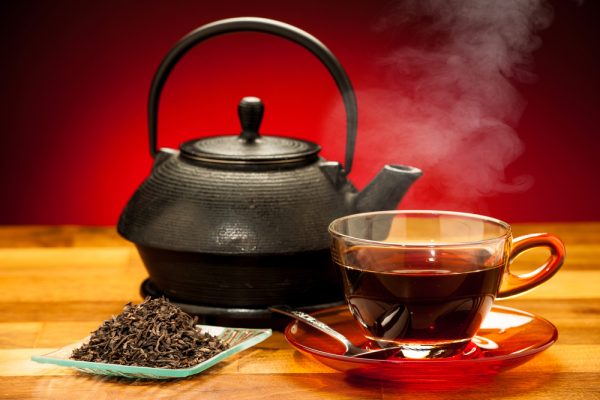Tea has been woven throughout Japanese culture since the 8th century. With tea seeds being brought back from China by visiting monks, this beverage was first heavily associated with religion. It wasn’t until the 13th and 14th centuries that the tea culture exploded and was adopted by people all across the country.
Although green tea is most widely consumed in Japan, a percentage of the population also enjoys a more fully oxidized beverage. Wakoucha tea, which is a rare variety of black tea produced in Japan, is popular both within the country and among tea enthusiasts. Its unique flavor is distinct from other types of black tea, making it highly prized and sought-after.
The Tea’s History
Black tea, which was first produced in Japan during the Meiji period (1868-1912), was harvested and produced solely for export. While it did well for a short time in the late 1800s, Japan struggled to compete with larger tea-producing countries and the exports quickly came to a halt. Today, only 2% of Japanese tea is exported. The rest remains in the country for locals to enjoy.
Harvest & Production
Whole leaves for Japanese black tea are harvested in the spring during the second flush. Once the leaves are plucked, they are left to oxidize for up to 15 hours, helping reduce their moisture by 60%. The withered leaves are then gently crushed and rolled, giving them a slightly curled shape. Once this process is complete, the leaves are then left to dry completely so that any remaining moisture is gone.
Oxidation Equals Flavor
Since Wakoucha tea is fully oxidized, or allowed to dry and darken, the flavor and strength of the tea is developed and strengthened. Compared to green tea, which is unoxidized and has a milder flavor, Japanese black tea is considered more robust. While Wakoucha tea is considered milder than other black teas, it is still a strong beverage full of caffeine and distinct flavor.
Brewing Wakoucha Tea
In order to get the best tasting cup of Japanese black tea, it is recommended that you use a teapot, tea infuser, or tea filter with loose leaves. Unlike using tea bags, these items will allow the leaves to expand fully in the water, releasing the most flavor possible. When brewing, 1 tsp of leaves is recommended for every 6 oz of water.
- Measure out and boil some water (preferably spring or fresh) and let it cool for about two minutes. For the best tasting results, it is recommended that the water be around 180°F. and steaming.
- Once the water has reached the correct temperature, pour the water into a tea pot.
- Measure out the corresponding amount of tea leaves and put them into the tea pot with the hot water.
- For the best tasting results, the tea leaves should steep for two minutes.
- Once the leaves are finished steeping, strain them out with a strainer. Then, it is time to enjoy your fresh brew!
Tea Bags
Even though it is not the preferred brewing method, Wakoucha tea is available in pre-filled tea bags. If you prefer a simpler brewing method, however, tea bags could be for you.
- Boil some water in a kettle or pot. For the best tasting results, it is suggested that spring water is used.
- Once the water is boiling, remove it from the heat and let it cool slightly for a minute or two, until it reaches 205°F.
- While the water is cooling, place one tea sachet into a mug. (The mug should hold approximately 8 oz of water when filled.)
- When the water is ready, pour the water into your mug and let the tea sachet steep for 3 minutes. When the time is up, remove the tea bag and enjoy your fresh brew!
Appearance, Aroma, & Flavor
Aside from its slightly curled shape, Wakoucha tea leaves are dark and often have golden tips. Once brewed, the tea appears reddish-brown in color and offers subtle notes of malt, fruit, and florals. While sipping on this tea, it is often described as gentle and light with notes of honey and spice.
Caffeine & Nutrition
While this type of black tea has less caffeine than some other varieties, it does still have a hearty amount. In just one serving, one 8 fl oz cup, there is anywhere from 60 to 90 mg of caffeine. When looking at its nutritional profile, there are zero calories in this beverage. There are also zero fats, carbs, and proteins (if no sweeteners or additives are used). This beverage is considered to be high in antioxidants.
Potential Health Benefits
Although these claims have not been studied, Wakoucha is believed to have a multitude of health benefits. Some of these include being an energy booster, helping to improve focus, aiding in digestion, keeping the heart healthy, reducing inflammation, combating headaches, and being an old-fashioned remedy for the common cold.
Conclusion
Tea can be placed in Japan as far back as the 8th century. Starting off with green tea varieties, it wasn’t until the Meiji period (late 1800s to early 1900s) that Japanese black tea was first produced. Originally harvested and exported to benefit the country, many factors worked against the tea business and exports soon stopped.
Although Japan is not known for its tea exports today, it does produce one of the most delectable and rare black teas on the market. Wakoucha tea, the uncommon black tea of Japan, is enjoyed by Japanese tea drinkers and a select few tea enthusiasts around the world. Known for its gentle and mild flavor with subtle floral, fruit, and malt tones, it is truly a delicacy and hard to come by.
Like other black teas, it full of antioxidants and, although it has not been proven, it is said to keep the body healthy. If you can get your hands on some of this second flush, whole-leaf, black tea, consider yourself lucky and give it a try.

